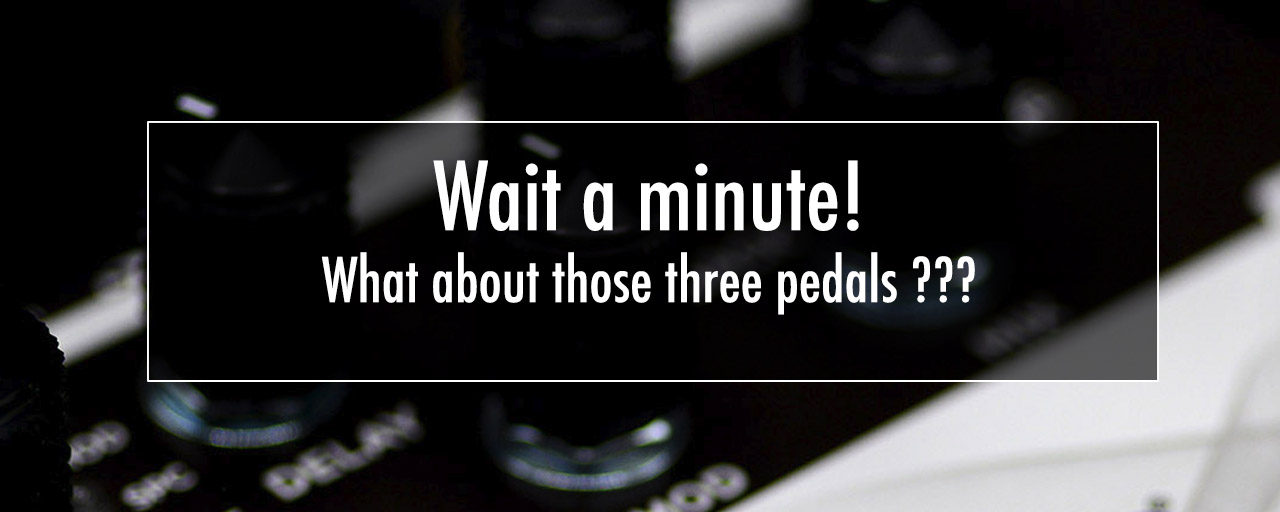
It has been too long since I sat down at this here wordprocessing contrapulation to write a blog and in that time we have released no less than three pedals. Three! Count them! The long delay was in part due to the challenges faced by the pandemic induced paucity of parts, oh and that one time our factory caught fire, but it is fair to say pedals are coming thick and fast out of the factory all of a sudden! Which made me realise I had neglected to write a blog for <cough> some days and had better fix that immediately. What better place to start than with our three most recent releases?
A Plethora of Pantheons
First in the schedule is the supremely sublime Pantheon Deluxe Dual Overdrive. Essentially this is a very simple idea – take the Pantheon circuit, famously based on the boutique variants of the bluesbreaker circuit, and add another one. That’s it. Nothing more to it. Well maybe tweak one side to be a bit more vintage-sounding, and sure we can leave the other side sounding modern, but then that is definitely it. Well maybe also add some MIDI switching (He said the M word!) for some extra fun.
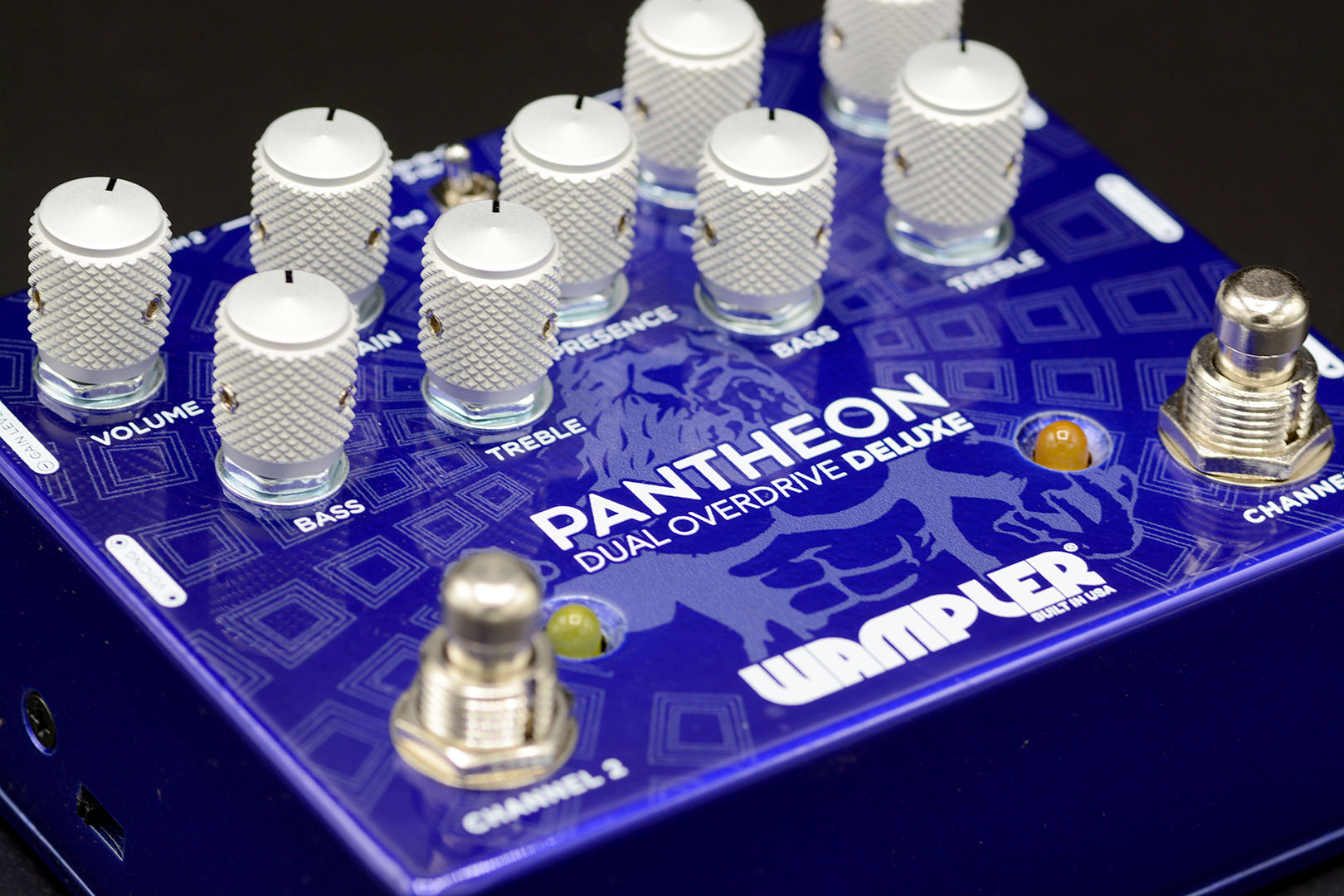
Ok are we done? Well – kinda. You see, when I first received the prototype I knew I was going to like it, I mean I loved the Pantheon, and of course there is another famous boutique pedal that uses a similar twin BluesBreaker approach. One could say it is a known formula. House it all in a premium paint job with knurled metal knobs and top quality hardware and crank it up…
What I hadn’t bargained on was the sheer number of variations that it was possible to speedily dial in given that there were two top-mounted 3-way switches for voicing and gain per side. A quick bit of maths later and I figured out that is basically the equivalent of 200 gain pedals in one – and that’s science! Or mathematics. I was never really great at either. But I digress. The Pantheon Deluxe really is a crazily flexible gain pedal. I found my natural use was setting the right side at a nice low “9 o’clock” gain type of position, just a little dirty boost if you will, and doing almost the exact opposite on the other side set at around “2:30”. Both sides sound great on their own. Combining the two brought me a boosted lead sound with sweet harmonics and plentiful gain. The Bass and Treble controls on each channel let you sculpt the tone perfectly, and there is a global presence control which is great for cutting through a live mix like a xhiphos through feta.
As mentioned earlier we also added MIDI switching to the pedal. This simply means you can operate any of the channels on or off state over MIDI. This is really useful if you use a patch switcher over MIDI and also if you have run out of loops on said switcher. The pedal also boasts Stereo inputs and outputs, again allowing you to configure your chain multiple ways – including inserting a separate pedal between the channels. Im a huge fan of this pedal – its the most tunable double od/distortion i’ve ever played and covers so much ground in one pedal.
Journey to the Metaverse
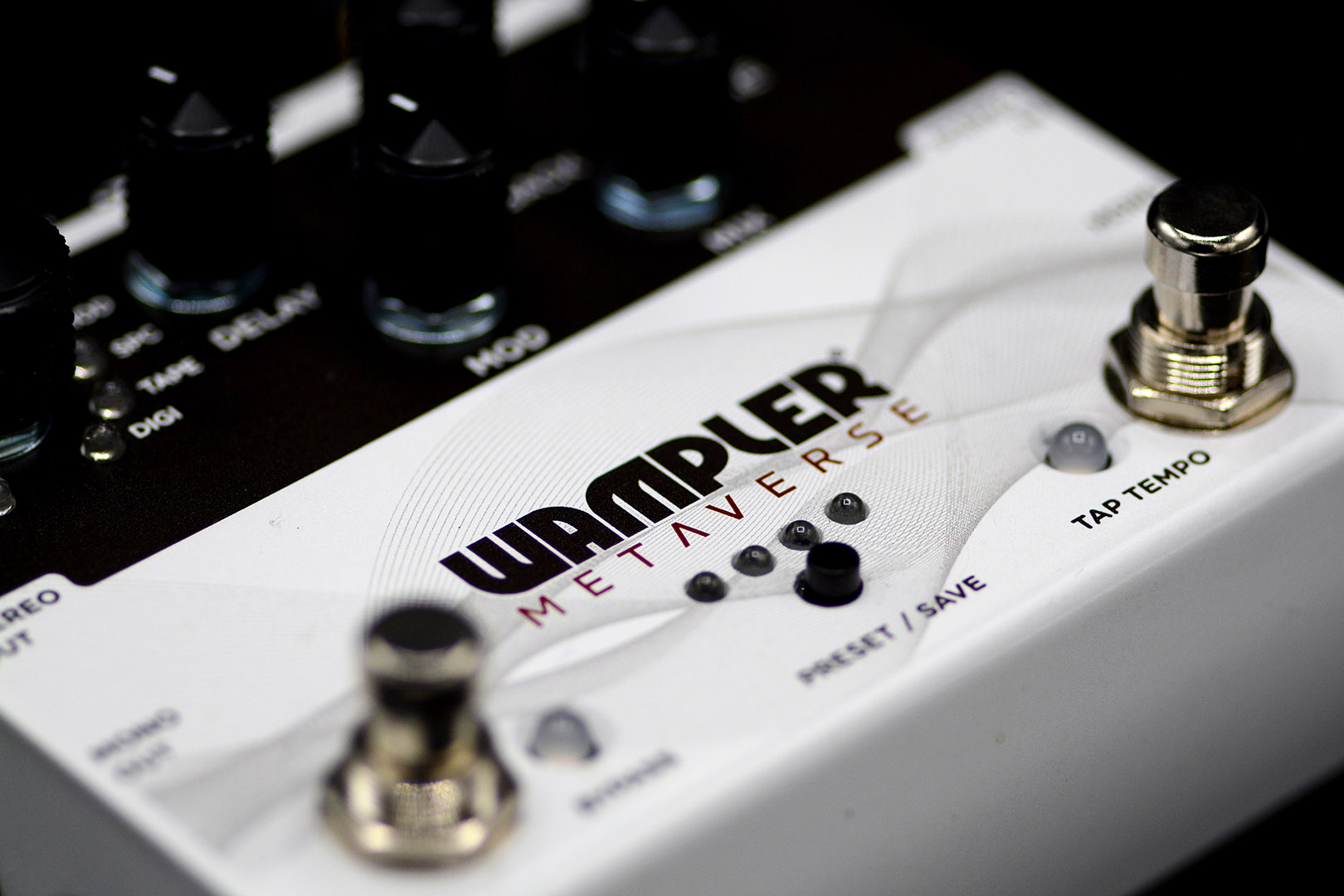
Next on the release schedule was the Metaverse multi delay. I’ve made no secret on various episodes of the Chasing Tone Podcast about how much blood, sweat, and sometimes tears we poured into the development of this pedal. It really shifts us up a gear in terms of MIDI wizardry while still retaining the easy to dial in great sounding tones that have become our calling card.
Firstly a bit about the name – a few internet wags have pointed out that it is a word that a certain internet entrepreneur favors for selling his silly virtual reality hats. The word has been in use in sci fi literature for years. We named this pedal some 18 months before that one guy decided to rename his social network. Whatever happened to them anyway? So the Metaverse was born – 11 delays, stereo inputs and outputs, full midi, gorgeous custom folded metal enclosure – it’s got the lot.
There are some really neat side features too. The Metaverse provides updates to three of Wampler’s classic delay pedals – the Faux Tape Echo (FTE), The Ethereal (ETH), and The Doctor (DOC), by offering enhanced delay length ranges, tap tempo in the case of the ETH delay, and also more subdivisions. The pedal can also be used standalone as a controller for a Wampler Terrafrom – connect the MIDI out of the Metaverse to the MIDI in of the terraform without a MIDI controller and you can use the Metaverse to change patches on the terraform at the same time. With some clever patch selection and programming this can be a powerful feature – two pedals working in harmony without an external controller. Sorcery!
This pedal certainly took a little longer than expected to bring to market due to the intervention of the pandemic in 2021, we have covered that and its far reaching effects elsewhere in detail. That gave us a bit of time to do something that we have never done before, and in fact, very few pedal companies had done at the point of release – and that was to include a set of software plugins for Digital Audio Workstations (DAW) with the pedal. These are available in .VST and .AU format and are available to buy independently here and come with a free 7 day trial. Anyone registering a Metaverse online will get them free, gratis, forever! Don’t ever say we don’t love you…These plugins are definitely worth an extended spin have no doubt. I discovered that applying liberal amounts of DOC to vocal tracks created awesome techno and dub-reggae vocals with ease. Running the clean Digital Delay (DIGI) algorithm into the FTE was so sonically pleasing that I ended up running two hardware units on my main pedalboard so I never had to go without.
Again, while the Metaverse is simple to setup with just a few tweaks of the front panel, plumbing it in to a MIDI controller offers a complete new world of precision and control. It supports full MIDI control meaning it can accept a global clock signal, all the parameters can be automated via CC messages, and patches (128 of them) can be accessed. I know a lot of you will have skipped this section because I mentioned that M word again so for those that are still with me let me tell you that this enhanced functionality will now become the benchmark for our DSP pedals moving forward.
How does it sound? Well I don’t want to blow our own trumpet too much, but nearly every one of the demo artists that we sent this too said it was the most musical sounding delay they had heard. In a year where it seems everyone has released a multi-delay, I’ll take that. I particularly love some of the more modulation heavy delays – especially the Analog Flanger (JET) which is superb at recreating 80s style sounds for heavier rock and metal – and it frees up my terraform to do another modulation effect too. The DIGI setting is ultra clean and superb for adding depth to a track in your DAW or live on stage. I got lost for days in the TAPE and ETH algorithms creating “twin” delay sounds using head combinations.
An Ox with Attitude
When is a tubescreamer clone not a tubescreamer clone? When it is A TS10 inspired midi pedal that Brian has completely re-engineered, that’s when. The Moxie Overdrive is our latest mini format pedal and once again, much like our other classic mini pedals, don’t let the size fool you – this thing is a gigantic hairy beast of tone and no mistake! Its wrapped into a gorgeous little mini enclosure with our signature black knurled knobs.
As well as the traditional Volume, Tone, and Gain rotary controllers, It has a Voice and Fat switch on either side of the tone knob and they can almost completely change the characteristics of this pedal. Flick the Voice switch over to the right to “cancel” out the mid hump associated with a traditional Tubescreamer. Flick the Fat switch over to the right to completely change the clipping structure to turn it into something that’s more akin to a traditional distortion pedal.
This pedal responds to the lightest of touch as well as the heaviest of thumps, and we have found a lot of people who didn’t traditionally bond with a Tubescreamer tell us this is the first one they have liked. Stack this with either the Wampler Belle or the Wampler Tumnus (or both) and you can open up so many possibilities. If you’ve not given a Tubescreamer a run on your board for a while, this may persuade you to revisit that decision. I totally recommend it for fattening up your tone, simply acting as a dirty boost with a bunch of sustain, or as a complete distortion solution with the optional fat and voice switches engaged. I had the mini Tubescreamer in my rig for about three years and I can tell you this knocked it off straight away.
And that leads us on to the future. Well, we probably have another three pedals coming out this year (fingers, toes, and anything else available crossed), and that information dear reader, is your reward for reading this blog piece to the end. As ever, watch this space, whilst simultaneously keeping space on your pedalboard for what else we have in store for you…
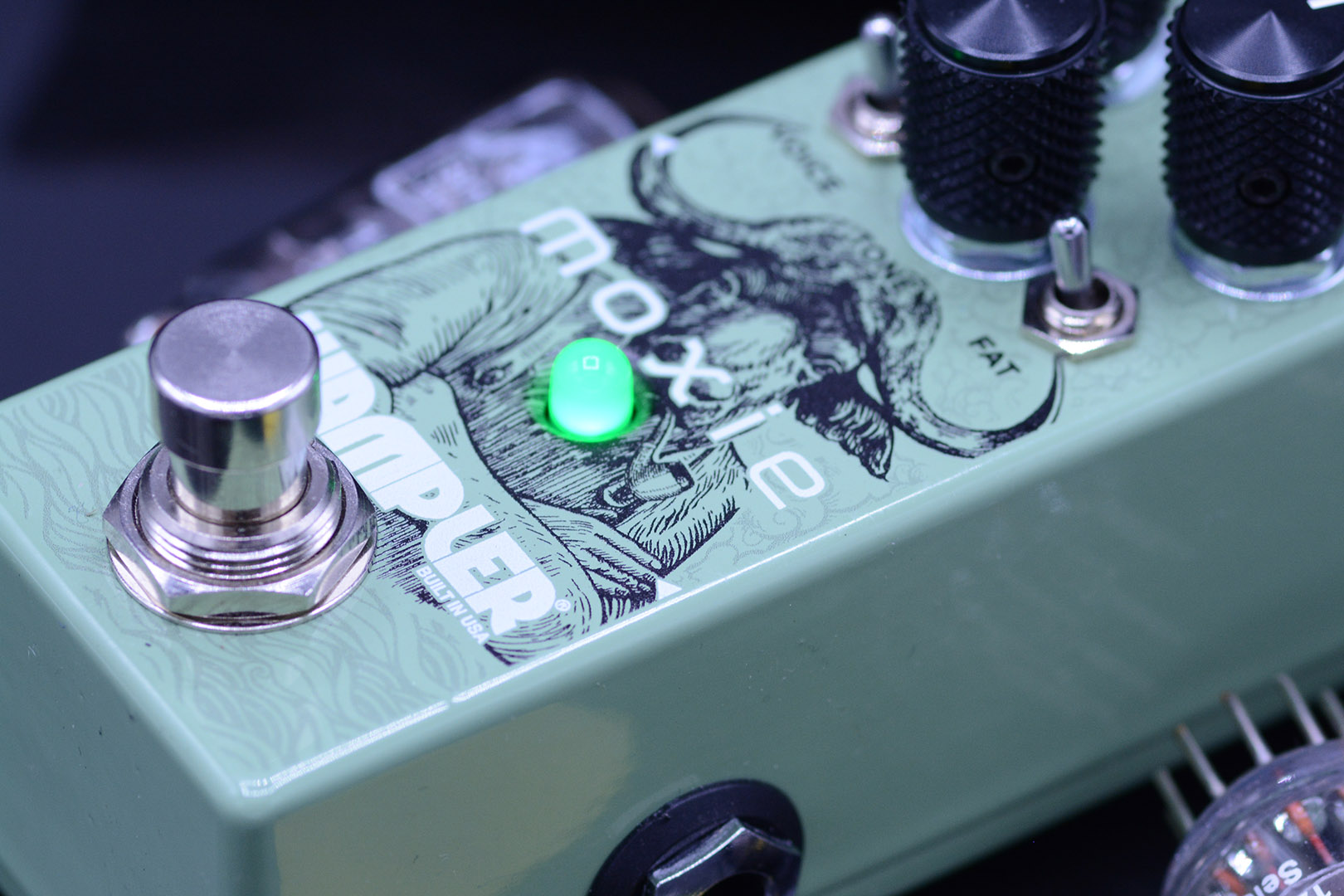
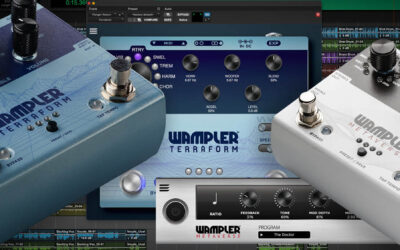
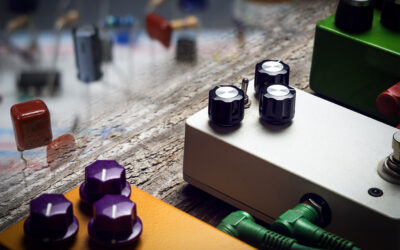

Benefit of the podcast is that I read this in Richard’s voice
what happened to the univibe